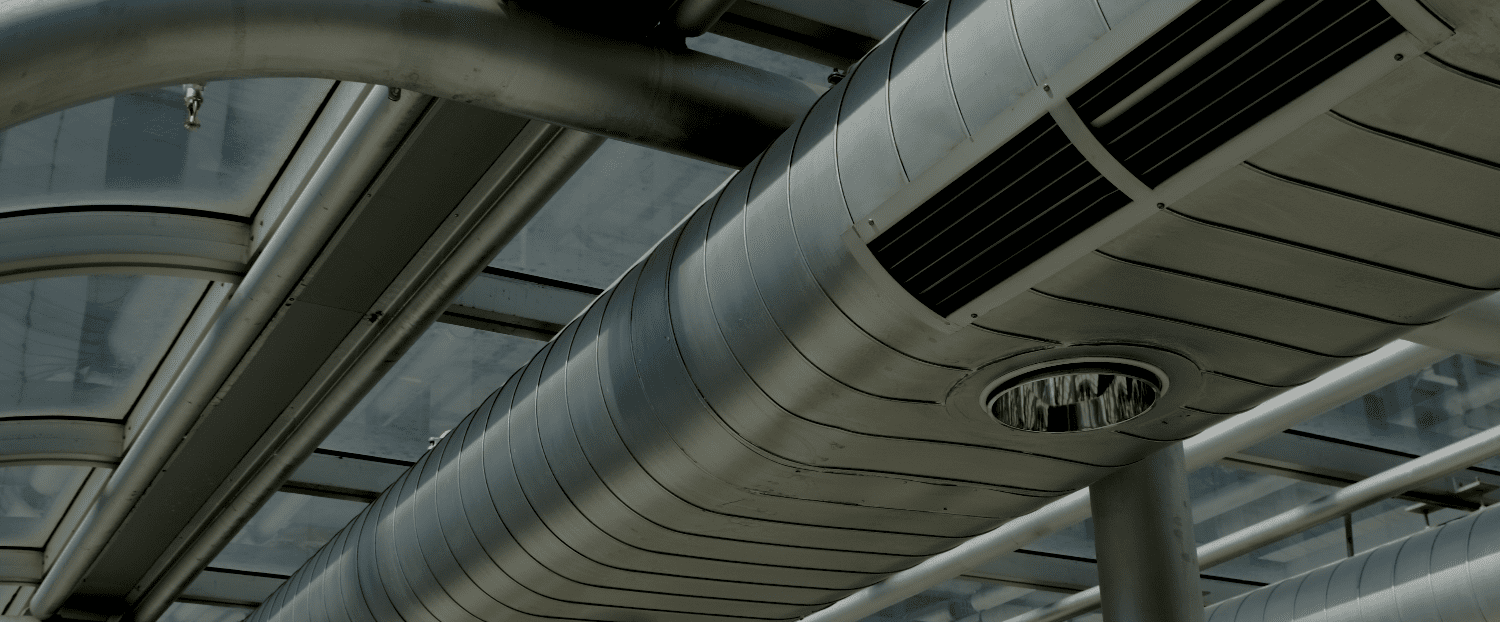
Thermo-Consult is a Hungarian design and consultancy office specialized in HVAC & R systems for the industry and commercial sectors. The company provides innovative and cutting-edge multidisciplinary engineering solutions since 1995 including design, commissioning, and auditing.
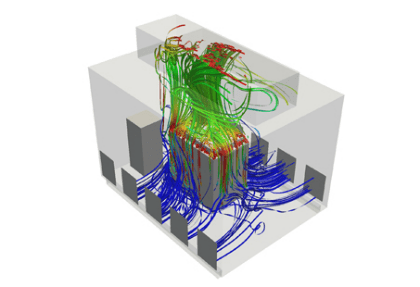
Thermo-Consult’s team was contracted by the University of Pannonia to provide complex HVACR engineering services for building an electron microscope. This small building had to house a cutting-edge lab equipment—an electron microscope with dual operational function (scanning and transmission) S/TEM. The project leader and lead designer was Gabor Petrika, M.Sc. in Mechanical Engineering.
The main challenges of this HVACR project were the following:
To design a cleanroom for the electron microscope which meets all the requirements set by both S/TEM suppliers, carrying out CFD simulation of the S/TEM room was essential.
As a small company specialized in industrial HVAC, it is essential for us to improve our competitiveness through innovative know-how like computational fluid dynamics. SimScale’s competitive pricing model enables us to be involved in this sector. Thanks to our CFD study with SimScale, we were able to create an optimal and very sophisticated HVAC system for an extremely sensitive cutting-edge lab equipment.

Gabor Petrika
Project Leader and Lead Designer Thermo-Consult
The goal was to create a multi-operational state ventilation system in the cleanroom with a changeable air flow pattern. The SimScale platform proved to be a very effective tool which enabled the design team to conduct the whole CFD analysis process without involving subcontractors. The numerical analysis was expected to control the designed ventilation system in terms of the S/TEM supplier requirements.
After multiple simulation runs with different working conditions carried out with SimScale, the arrangement of the displacement air inlet diffusers were optimized, which resulted in the required air flow pattern. The 3D model that was created in Onshape was imported to the SimScale platform with a single ‘click’. A coarse mesh was created for the initial runs to reduce the calculation time and a fine one for the final runs. They used Hex-dominant parametric mesh type with several refinements.
Two analysis types were used to simulate the two operational states of the designed ventilation system for the electron microscope: incompressible OPS1 (without an internal thermal load) and OPS2 with convective heat transfer method.
“During the whole project, the SimScale support team did a great job. The project leader had a daily based contact with the support team. All the problems were solved in a fast and professional way. We also received comprehensive answers to questions about the advanced settings. On top of that, we found the webinars to be very useful,” mentioned our customer.
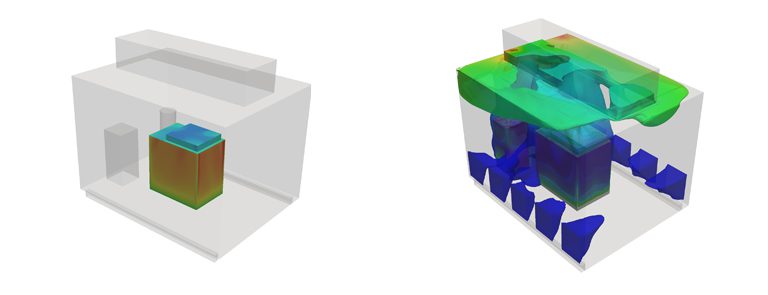
The simulations results confirmed the engineer’s expectations about the main flow characteristics. The use of numerical modelling enabled him to fine-tune the first concept and check the air state and velocity parameters at different flow rates and operational states. There were two key factors during the ventilation design to investigate:
The flow. The customer could determine the air flow which would fulfill all requirements during the experiments and decided to apply an iterative method. First, a coarse mesh had been created for multiple simulation runs with different air flow values. The boundary conditions were modified after each run based on a short analysis of the results of the latter setup. The SimScale platform provided the results very fast on coarse meshes. In a very short time, they had 8 flow configurations to analyze, which gave a great ground for all engineering decision to be made. At the final step, a fine mesh simulation was conducted with the selected air flow value.
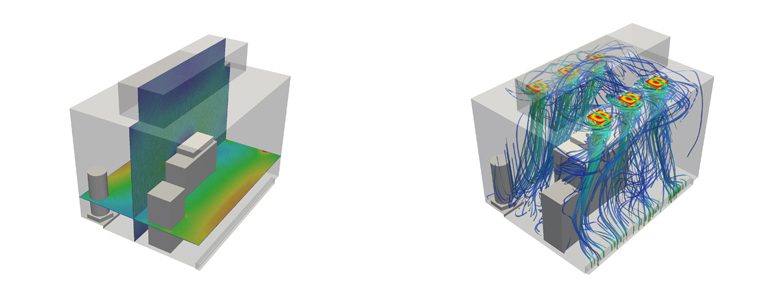
The flow pattern. The designed ventilation system is expected to maintain a prescribed cleanness of the room without disturbing the operation of the microscope. To meet both requirements, the team decided to create a multi-operational state system, which enables the user to change the air flow direction. The main goal of our customer’s air flow pattern investigation was to avoid “dead zones” in the cleanroom. These results proved to be essential during the presentation of the proposed engineering solution to the client. The operation states of the ventilation system could be very effective demonstrated by using CFD results. The final conclusion of the analysis was that the perforated exhaust plenum must be expanded.
The final results were summarised in a CFD report which was sent to the lab equipment supplier for an approval. With this, the design team could finalize the HVAC panning with a great confidence. Using cloud-based simulation with SimScale for virtual testing, a large investment cost was saved. “This small project was a perfect initial step in our SimScale platform usage. It gave us a great deal of confidence in using this tool in the future. We plan to have this reference project as a potential basis for a future project in the lab equipment sector,” mentioned our customer.
Using cloud-based simulation with SimScale in the first stages of testing, a large investment cost was saved.
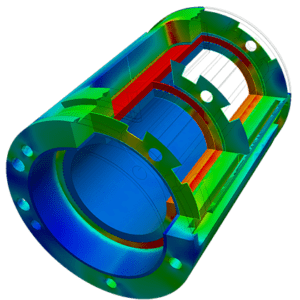

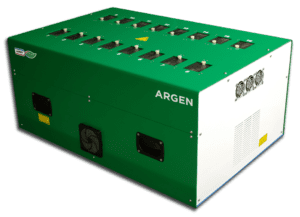

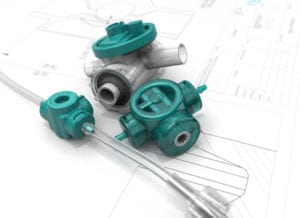

Sign up for SimScale
and start simulating now